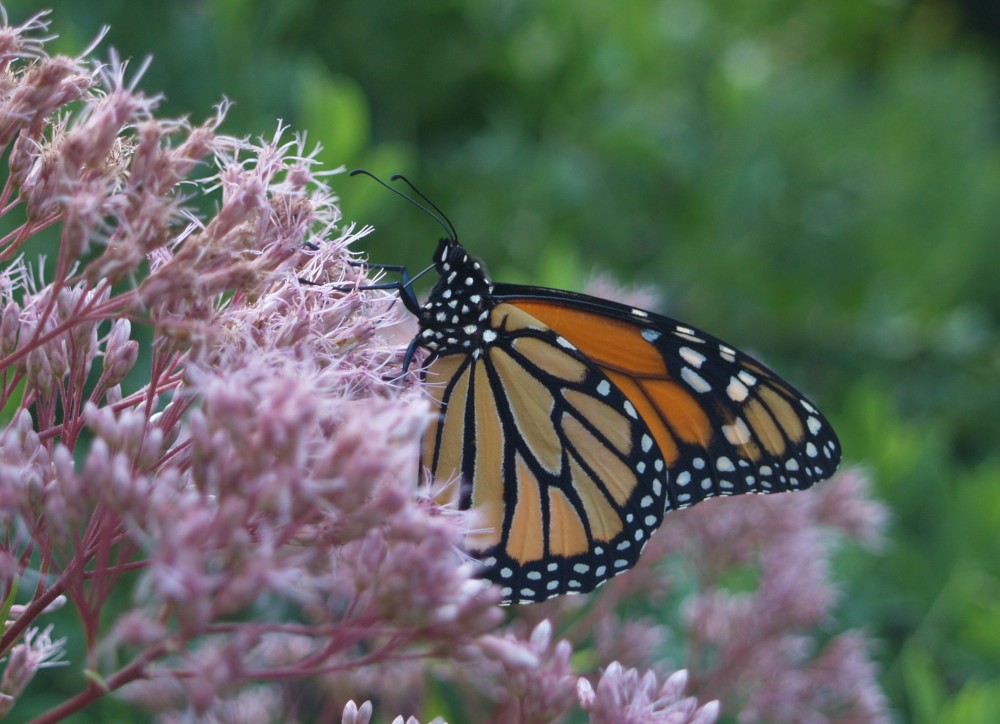
In recent years more locally native shrubs and perennials have been added to the garden, not so much for propriety as by necessity. Doubtless, planting natives is the thing to do, but that was not my intent. As a portion along the southern edge of the rear garden has become much wetter, long established hollies (Ilex) and witch hazels (Hamamelis x intermedia) finally succumbed, and I searched for plants best suited to the constant dampness. Inspiration was found in a nearby wetland at the low point of a hiking trail my wife and I occasionally visit, and now the damp border of the garden is planted with buttonbush (Cephalanthus occidentalis), sweetshrub (Calycanthus floridus), and black chokeberry (Aronia melanocarpa, above).

Truth be told, only a clump of buttonbush (above) is growing in this small wetland, which was noticed as hordes of bees buzzed between the globe shaped flowers. But, it was this splendidly flowering buttonbush that got the ball rolling, and references for local natives identified other potential shrubs that would tolerate the saturated soil. Joe Pye weed (Eupatorium maculatum) and Blue flag iris (Iris versicolor) are beginning to spread through areas of shallow standing water, and though the swampy area is still a few years away from suiting my eye, I’m pleased with the start from the shrubs and wetland perennials I’ve planted into the slop.


Red and yellow flowered sweetshrubs (Calycanthus, below) have been planted into both damp and dry areas, in sun and shade, and while I expect ones in sun will branch more compactly, there are no complaints about the shaded shrubs. The fragrant flowers are oddly shaped, and not brightly colored in the manner that grabs greater attention, so that they are not likely to become more common. But, they are interesting shrubs with long lived and fragrant blooms, and foliage that is pleasant enough even when they are not flowering.

